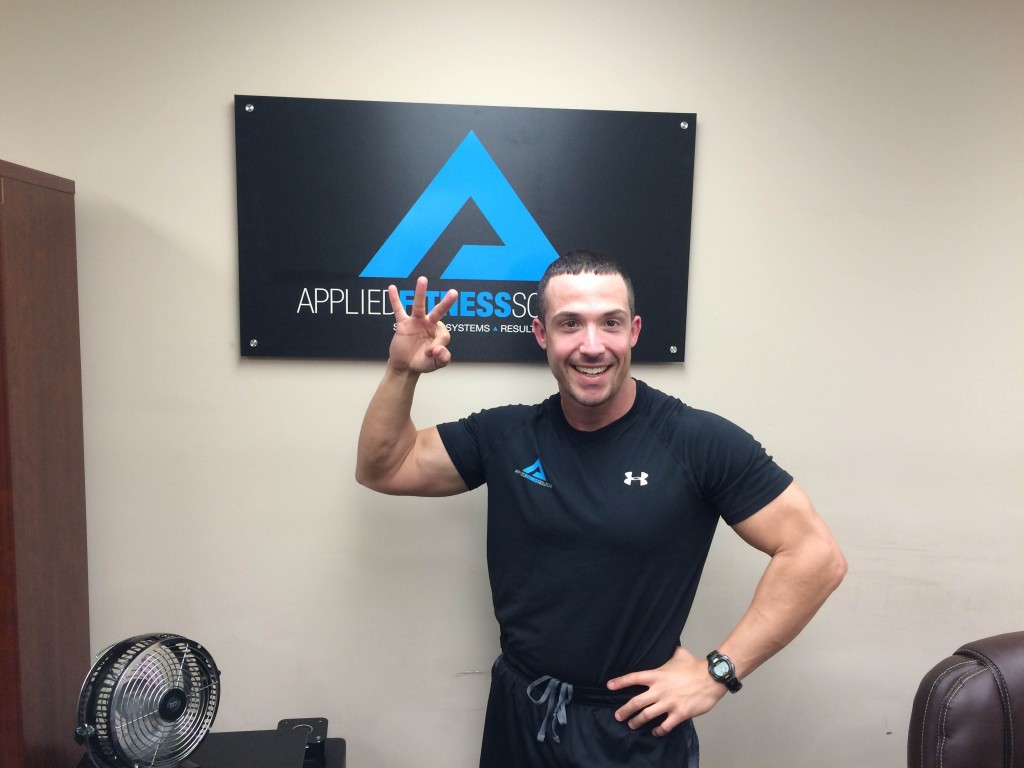The single most disliked aspect of any diet is undoubtedly logging your food. No one likes to do it, most people don’t have time to do it, but somehow, someway it’s a necessary evil in order to achieve your weight loss goal – or is it?
What if I told you food logging isn’t for everyone? For some that means just not at this point in their life, for others it might mean forever. What if you’re one of these people? Does this mean you’re doomed to never lose weight, to never reach your goals? Not quite! You can achieve some very significant weight loss by adhering to the three simple steps below.
Non-Food Log Tip Number One: Use a “Handy” Tool to Control Portions
Your hand is a great approximation of one serving of a number of different food items:
- Palm = one serving of protein (poultry, red meat, seafood)
- Fist Clinched = one serving of fruit or veggies (not including potatoes)
- Cupped Hand = one serving of dense carb sources (pasta, rice, potatoes, etc.)
- Thumb = one serving of fat items (nuts and nut butters)
Limit yourself to one (or fewer) serving of everything listed above, every time you eat. This will allow you to save a ton of calories and also ensure you’re getting a well-balanced diet.
Non-Food Log Tip Number Two: Load up on the Protein & Veggies
The exception to limiting to one serving above is veggies and protein. At each meal having one to two palms of protein along with two-to three three fists clinched of fruits and veggies is a great way to fill you up. These meals, although filling will be very low calorie and very nutrient dense, this is the perfect combination for weight loss. High nutrient quality ensures you get the critical nutrients you need (like vitamins, minerals, and proteins) while restricting calories. Filling you up will reduce your overall drive to eat. The net effect is a greater, more sustainable calorie deficit to achieve desired weight loss.
Non-Food Log Tip Number Three: Cut Out ONE Item per Day
This might seem like a simple one, but can be incredibly effective. If you look at each of your days, there’s probably one food item (usually higher/empty calorie) that you can live without. If you can go on a seek and destroy mission with your diet to find that one item every day and eliminate it, this can make a huge impact on your daily intake. Each day your challenge is to find something you would normally eat, you can live without and isn’t essential (like those things mentioned in tip two) then cut it out. It could be a donut, a bagel, chips, or whatever! It really doesn’t matter what it is. Cutting out any one item can save upwards of 500 calories per day. If you do that for seven days, you’ll lose one pound just cutting out that one item (provided its high enough calorie). Just think of all those friends of yours who said they achieved remarkable weight loss just by cutting out sugary soda, it makes sense! Also, remember you can cut out two items if you’re looking for faster fat loss.
Take Home Message
If you’ve tried food logging and just struggled with it OR may be you’re not ready to commit to food logging just yet, these tips are a good step in a very positive direction toward greater conscious awareness of what you’re eating. By limiting yourself to one serving of all foods, cranking up your protein/veggies, and cutting out one thing you don’t need, you can be well on your way to weight loss without ever logging a single day!
About the Author:
-

Michael Stack is the founder & CEO of Applied Fitness Solutions and Frontline Fitness Pros. He is a faculty lecturer for the University of Michigan’s School of Kinesiology. He is also the creator and the host of the Wellness Paradox Podcast, produced in conjunction with University of Michigan.
Michael is an exercise physiologist by training and a health entrepreneur, health educator, and fitness industry advocate by trade. He is dedicated to enhancing the standard of practice of, and advocating for, fitness and wellness professionals to ensure they become an essential constituent in the healthcare delivery system.
With a career spanning over three decades in fitness, health, and wellness Michael has a deep knowledge of exercise physiology, health/wellness coaching, lifestyle interventions to mitigate chronic disease and leadership. He is credentialed through the American College of Sports Medicine (ACSM) as an Exercise Physiologist (ACSM-EP), Exercise is Medicine practitioner (ASCM-EIM), and a Physical Activity in Public Health Specialist (ACSM-PAPHS). Michael is a National Strength & Conditioning Association (NSCA) Certified Strength & Conditioning Specialist (CSCS), and a CDC Diabetes Prevention Program (DPP) Lifestyle Coach.
Michael received his undergraduate degree from the University of Michigan’s School of Kinesiology in 2004 and is currently a Master’s of Public Health (MPH) candidate at University of Michigan, with a specific concentration in health behavior and health education.
Michael is a board of directors’ member for the Physical Activity Alliance and Michigan Fitness Clubs Association. He sits on the University of Michigan’s School of Kinesiology Alumni Board of Governors. Michael is an expert curriculum reviewer for the American College of Lifestyle Medicine. Finally, he is a member of the executive leadership team for American Heart Association’s Heart Walk.
Michael lectures nationally for several health/fitness certification and continuing educations, including; IHRSA, the Medical Fitness Association, the National Strength & Conditioning Association, and SCW Fitness.

